Denis O’Connor
Unearth: The Ceramics Room
11 March - 16 April 2016
Denis O’Connor’s current exhibition at Two Rooms sees the artist revisiting his porcelain clay works after 33 years spent as a sculptor and poet. Serving as something of a precursor to an Australian residency, where O’Connor will work exclusively on ceramics, the current show includes a number of archival vessel and wheel-thrown porcelain pieces from the collection of Stuart Newby. In addition, many of the early ceramics reappear in the new slate drawings – a medium for which O’Connor has become renowned over the last 30 years. Reimaged and reconfigured, the ceramics become fragments of the artist’s memory-load, provenance and inspiration. Indeed, several slates pay direct homage to the influences that informed O’Connor’s early clay work with the ceramicist Ron Nagle, Italian still-life painter Giorgio Morandi, surrealist Joseph Cornell, and Japanese Tea Ware from the seventeenth and eighteenth centuries, all leaving their mark.
Another sub-set of slate works in the show, Found Shards, also take their starting point from O’Connor’s early ceramicist days, although this time it’s the debitage[1] found around the artist’s now-derelict kilns, which were used throughout the 1970s and early 80s. Rethought and repurposed, they now function as components in small operettas drawn on slate fragments. Across the works are homages to the late Barry Brickell, Len Castle, and the art dealer Denis Cohn, all of whom were early supporters of O’Connor’s ceramics.
[1] “debitage, n.” Archaeology. “The unworked chips, flakes, or other waste material produced in the making of stone or flint implements.” Oxford English Dictionary Online. December 2015. Oxford University Press.
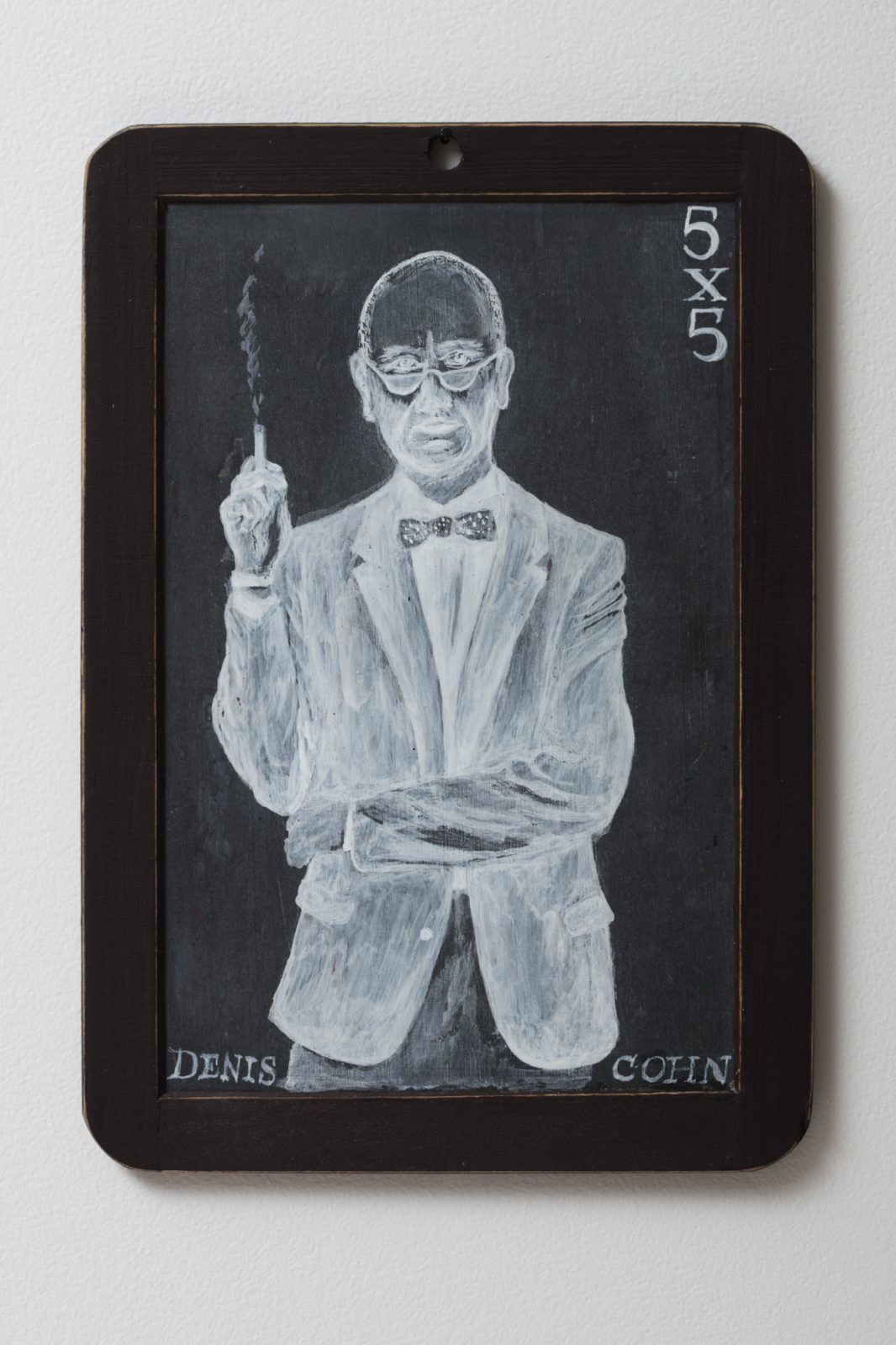
acrylic on French school slate
262 x 182 mm
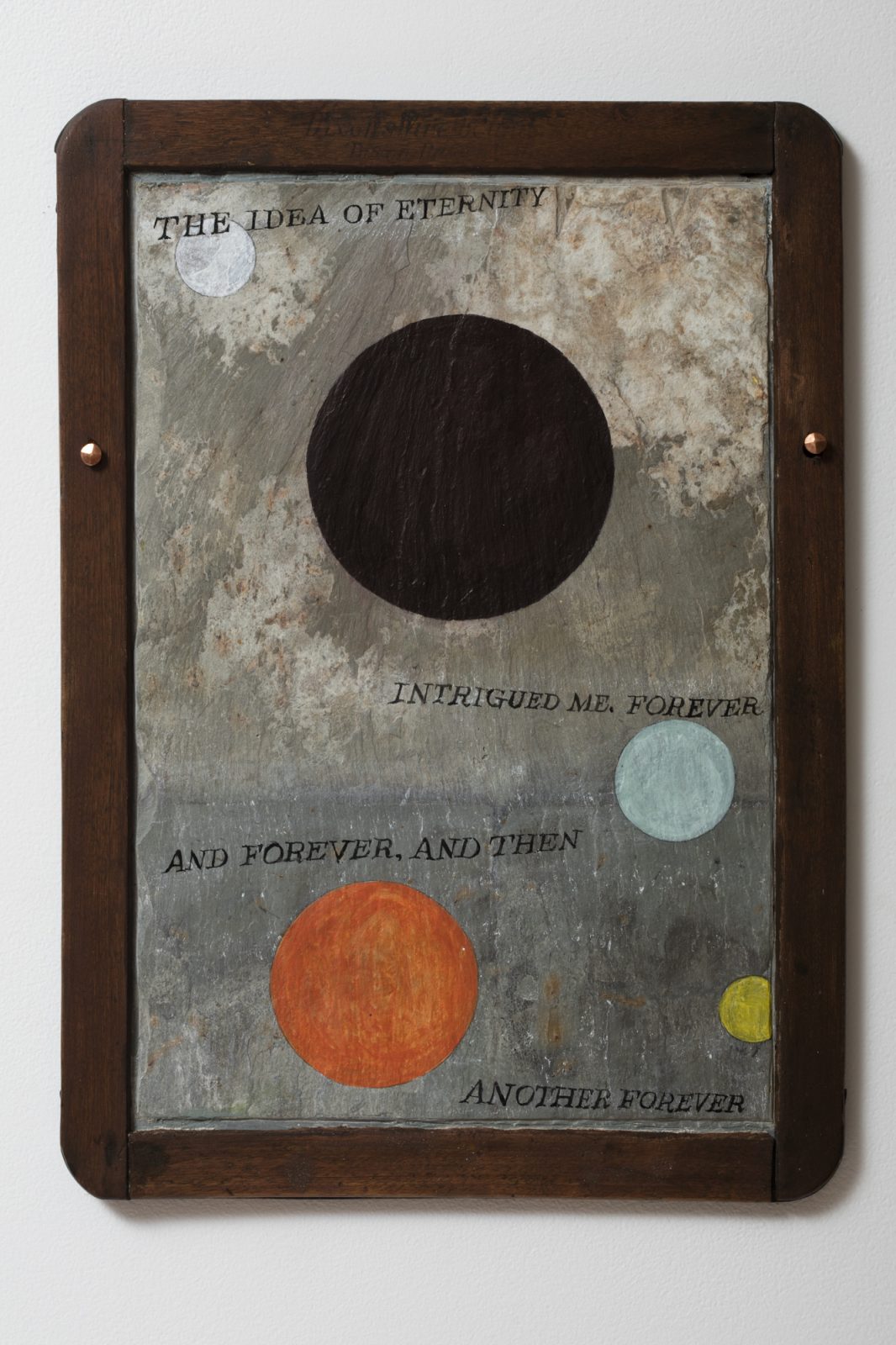
acrylic on English slate
355 x 255 mm
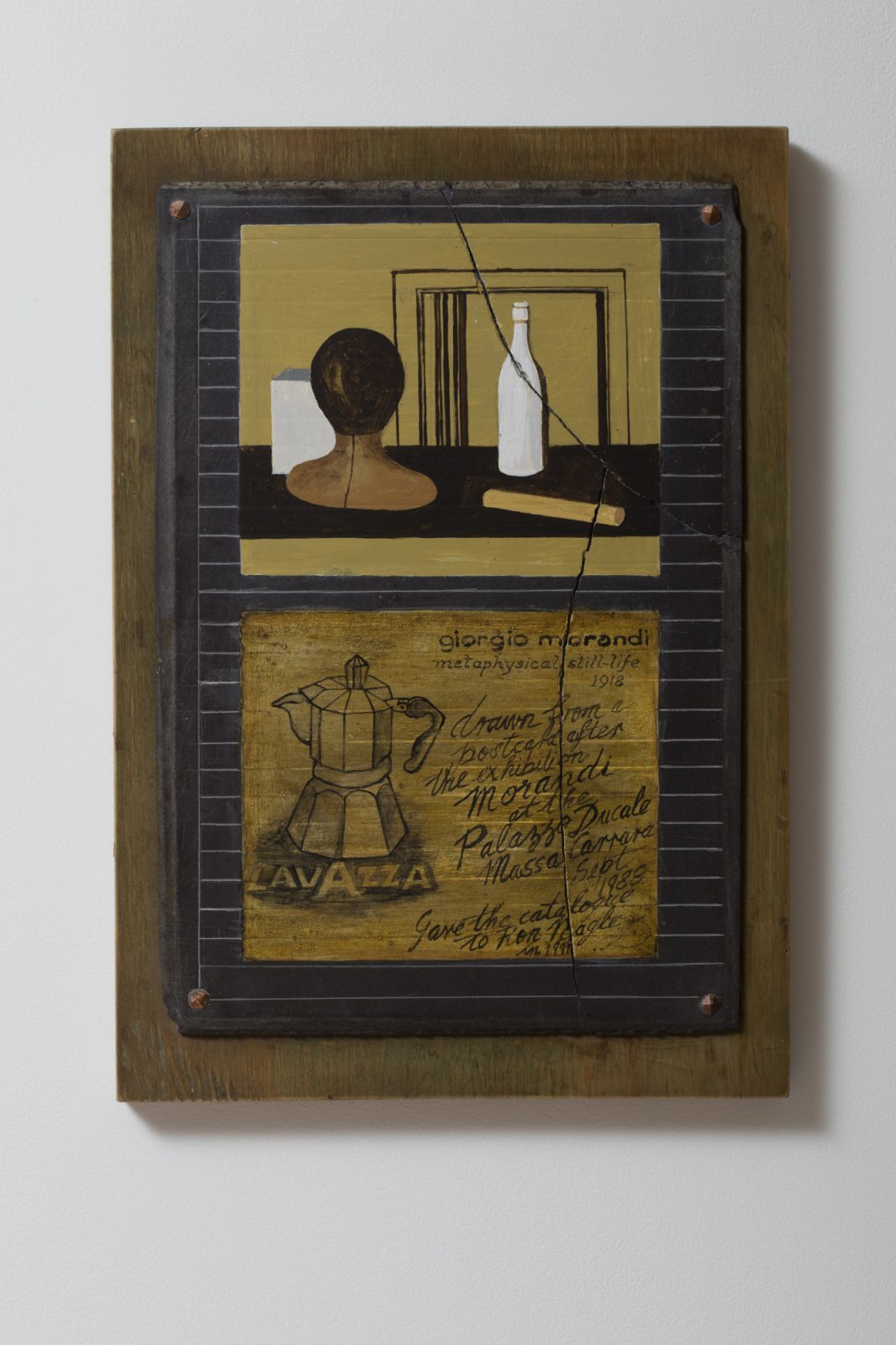
acrylic on French school slate
365 x 255 mm
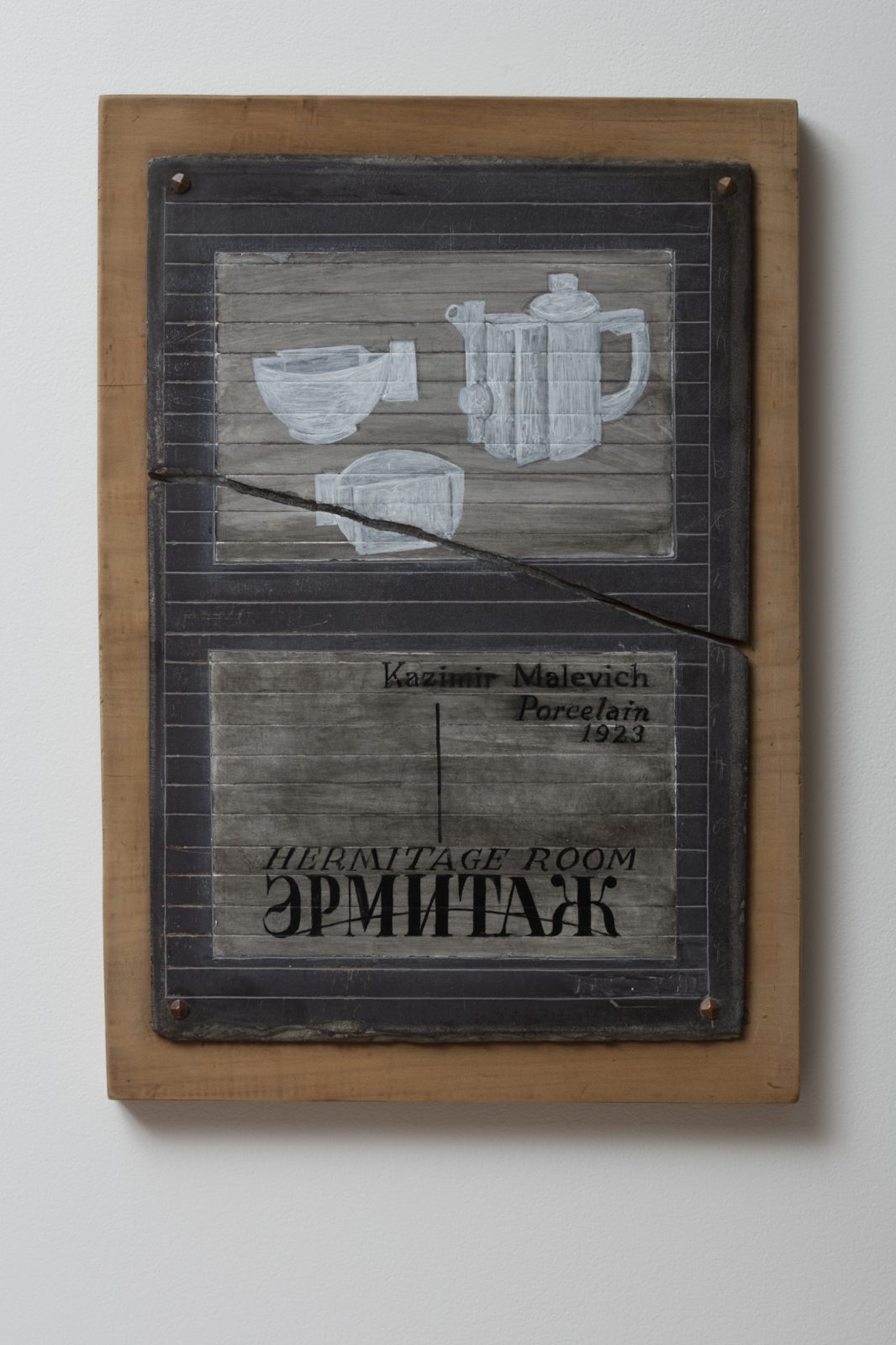
acrylic on Welsh slate
365 x 258 mm
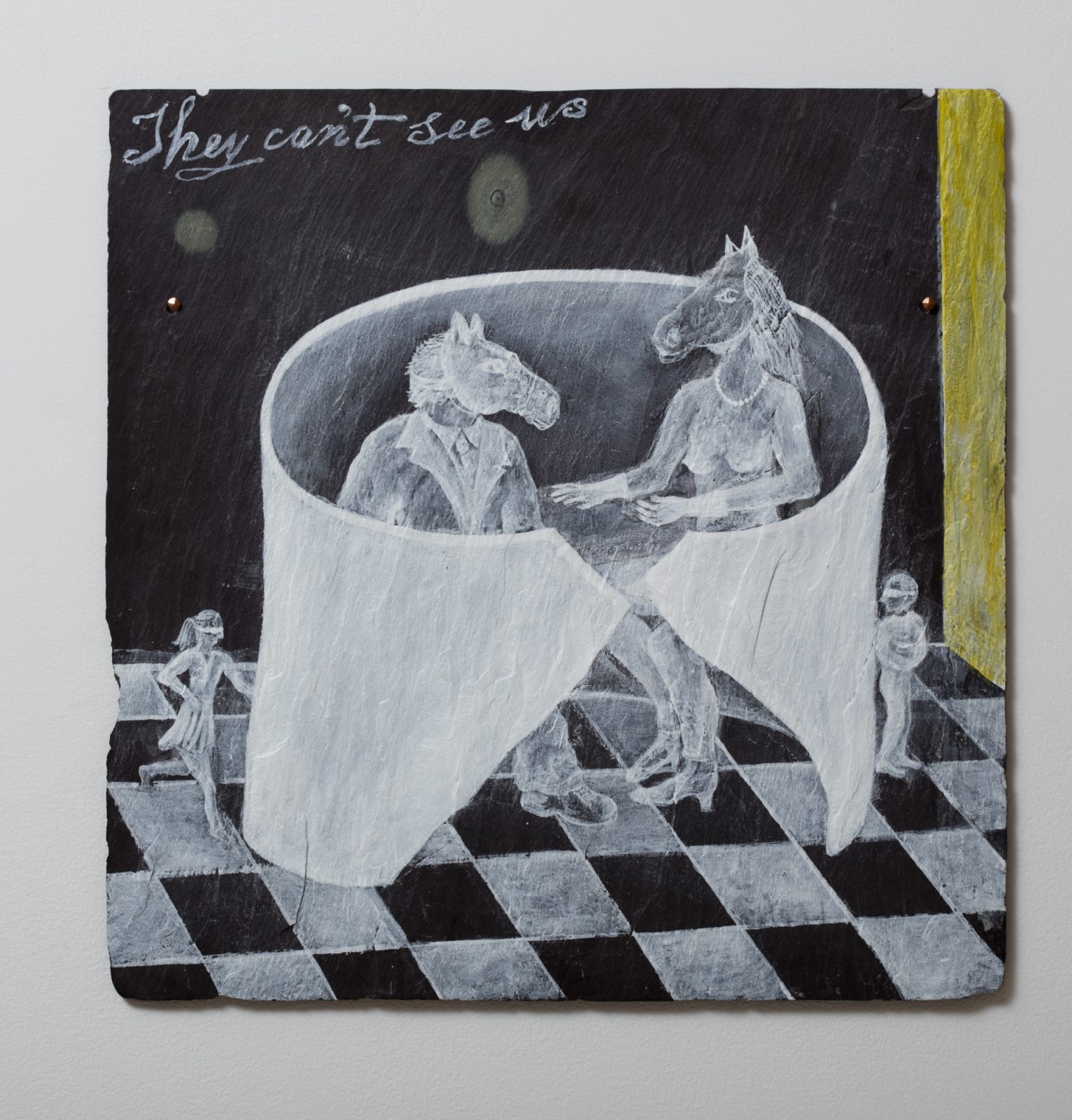
Acrylic on Welsh slate
310 x 315mm
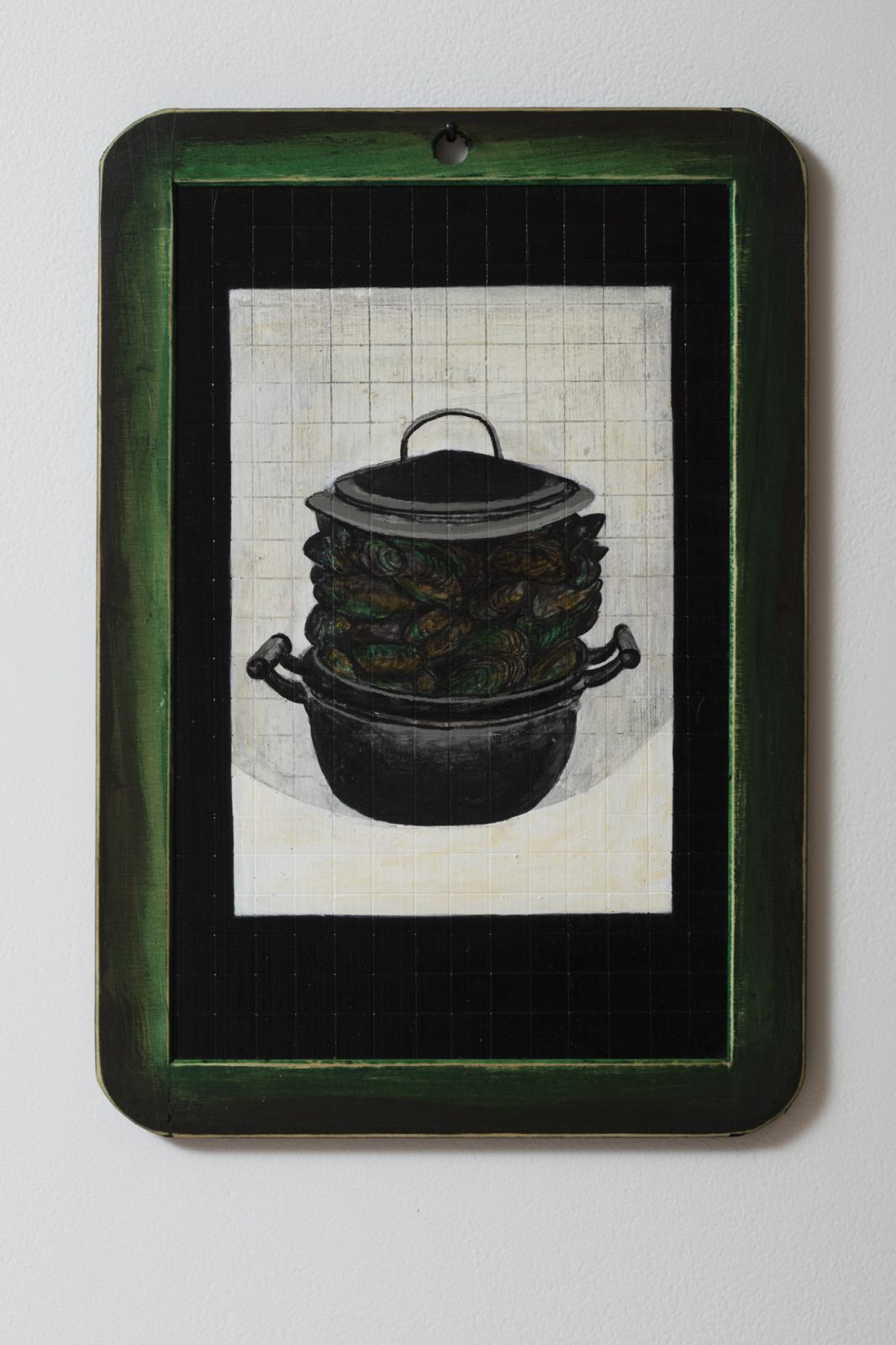
Acrylic on French school slate
262 x 182 mm
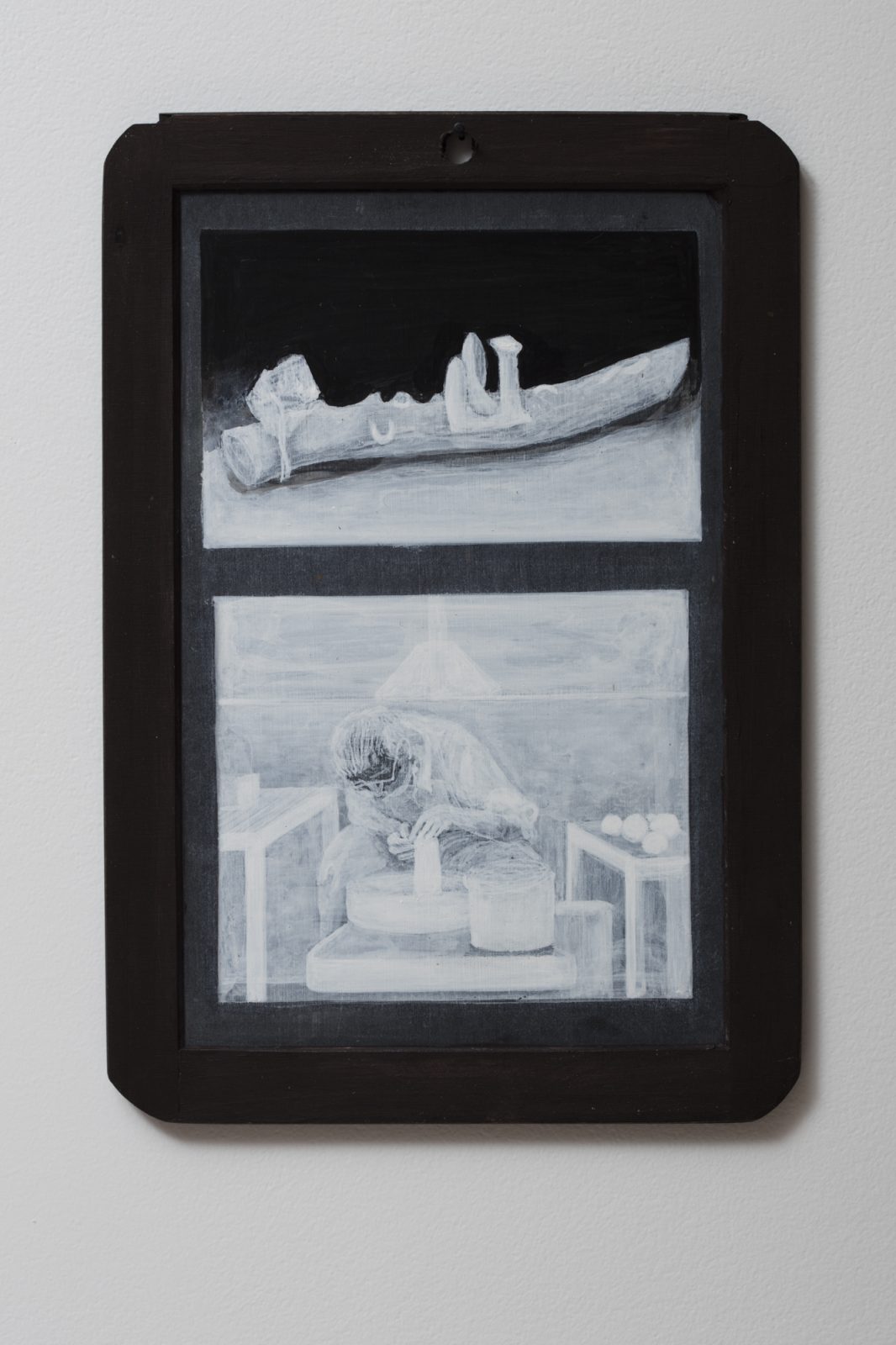
Acrylic on French school slate
262 x 182 mm
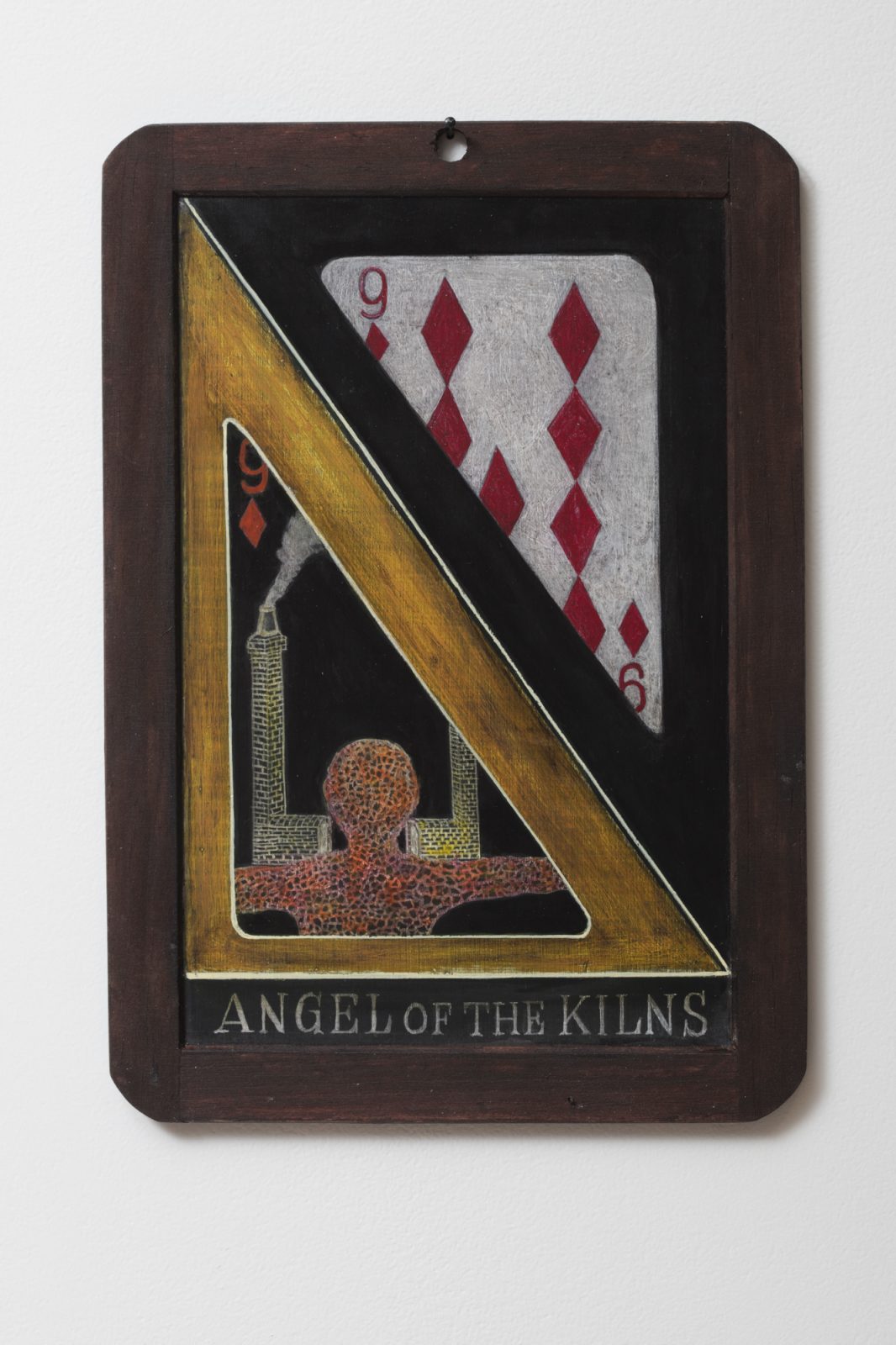
Acrylic on French school slate
262 x 182 mm
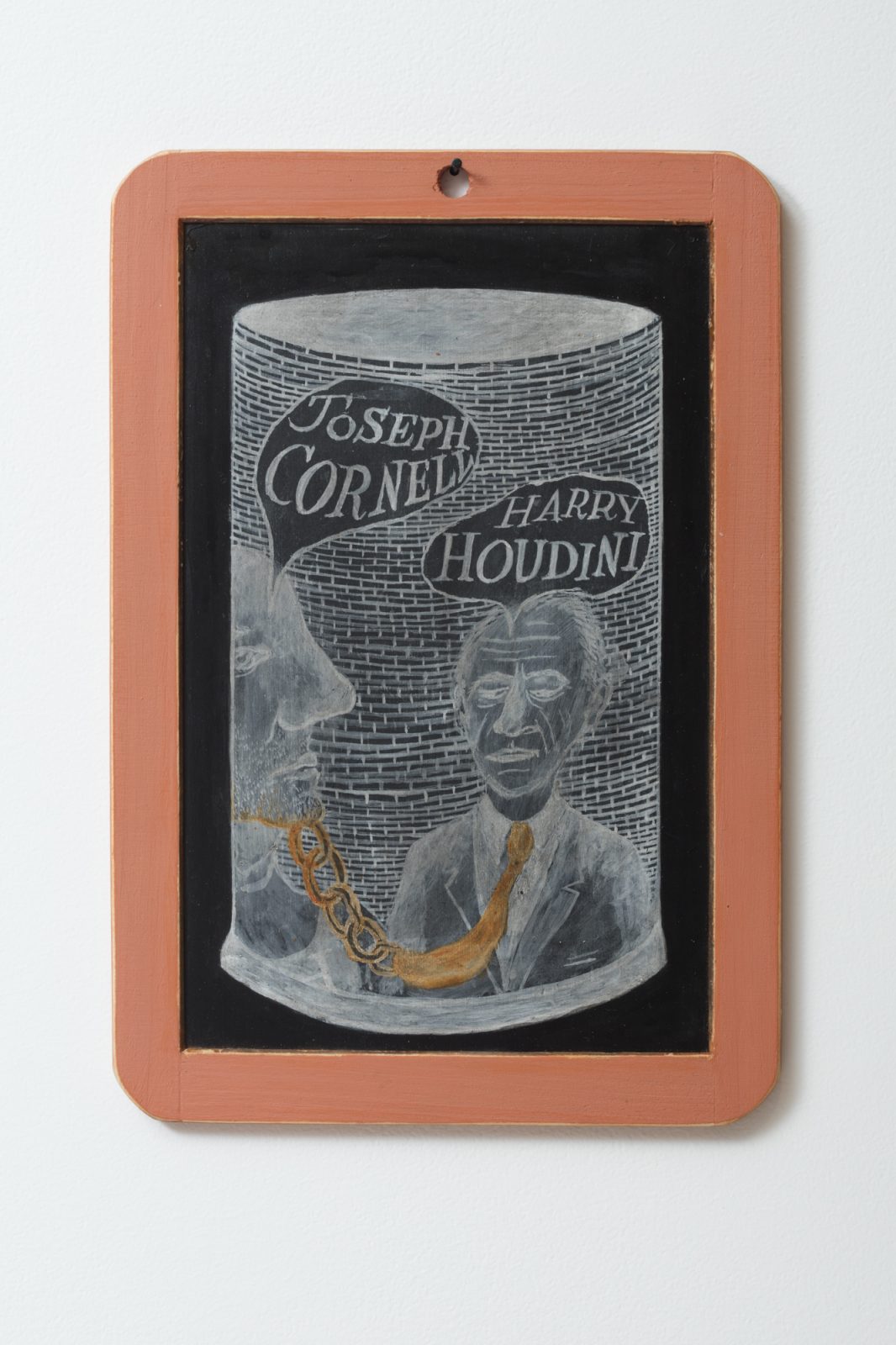
Acrylic on French school slate
262 x 182 mm
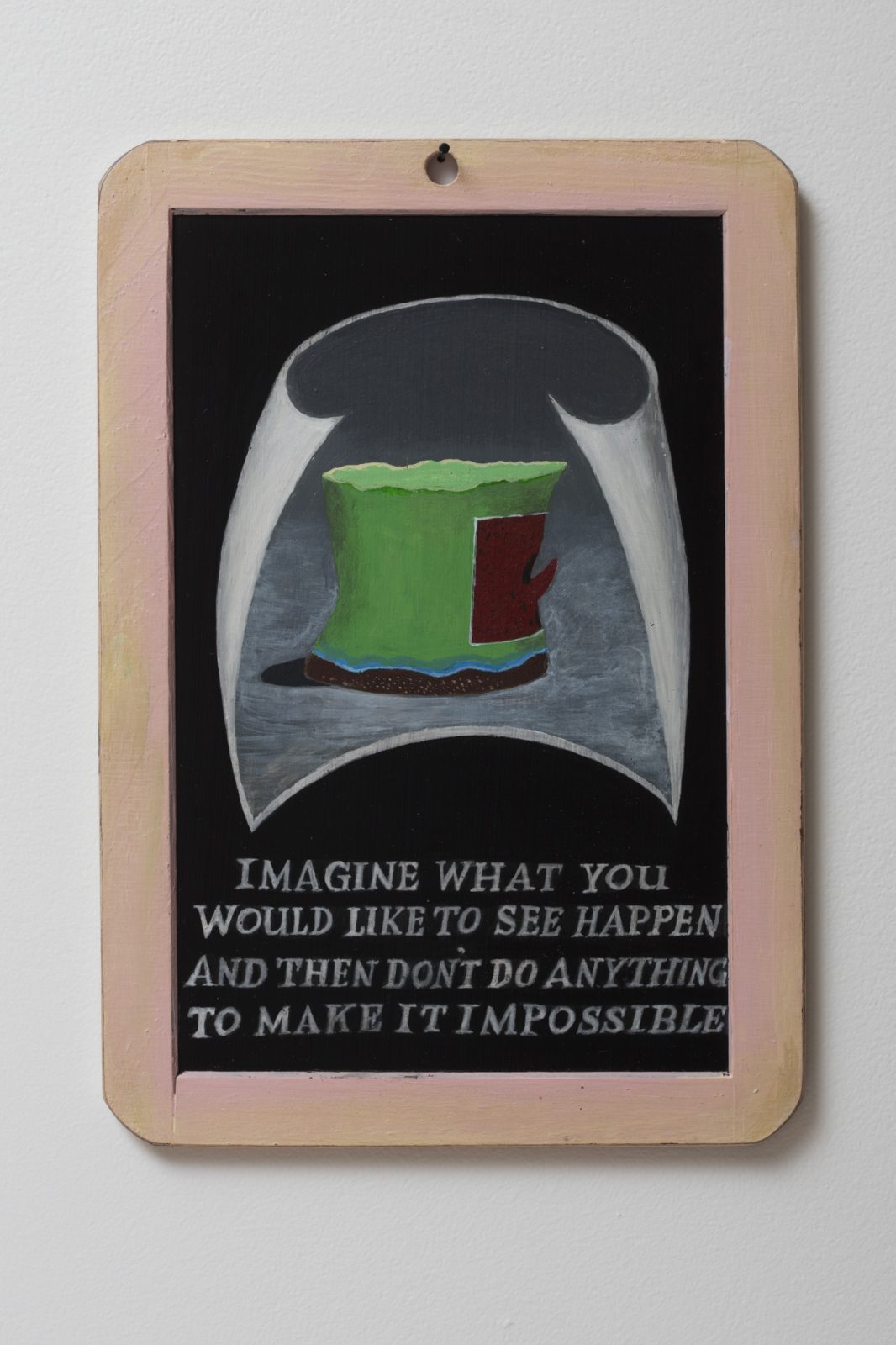
Acrylic on French school slate
260 x 182 mm
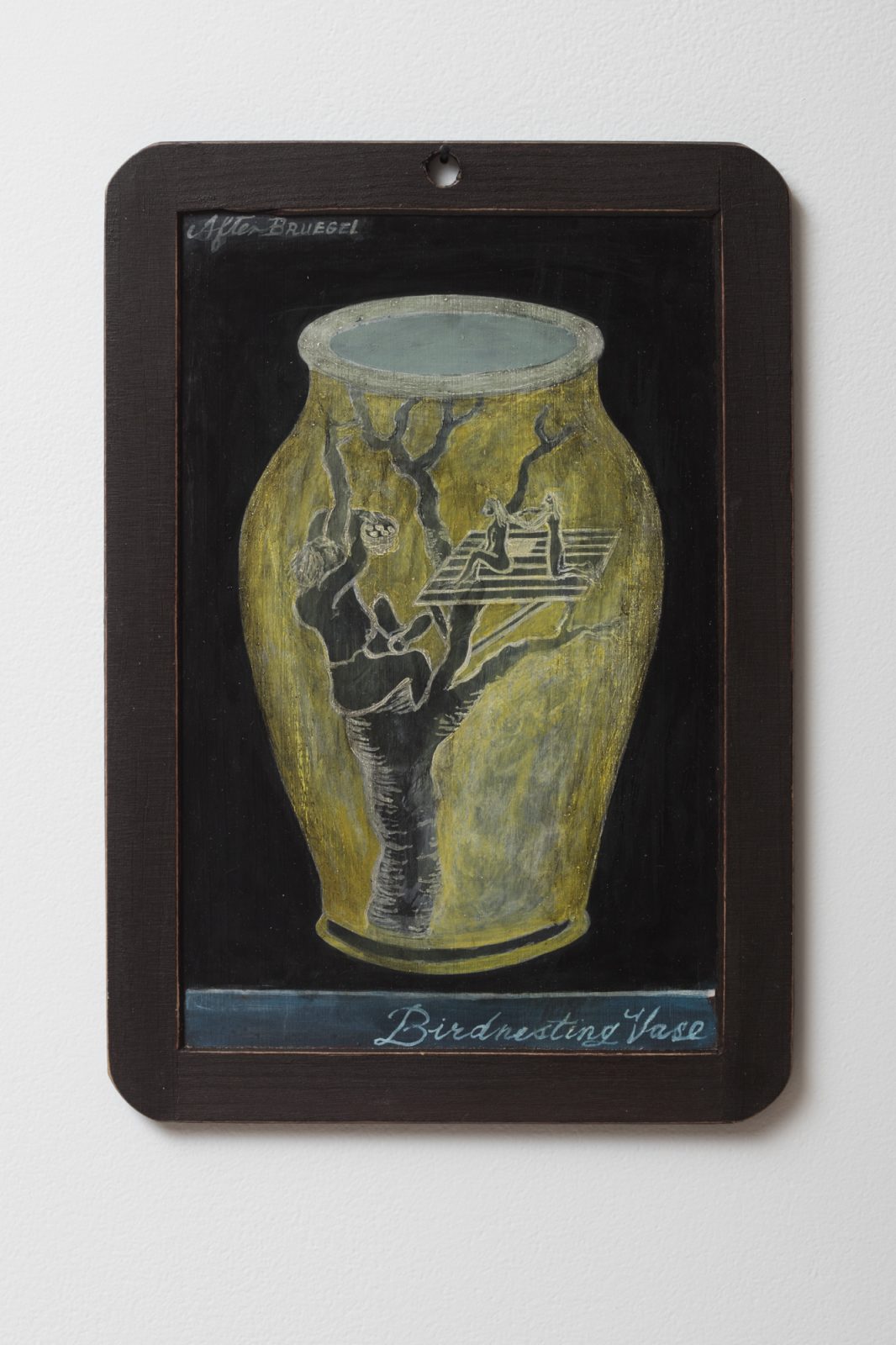
Acrylic on French school slate
262 x 182 mm
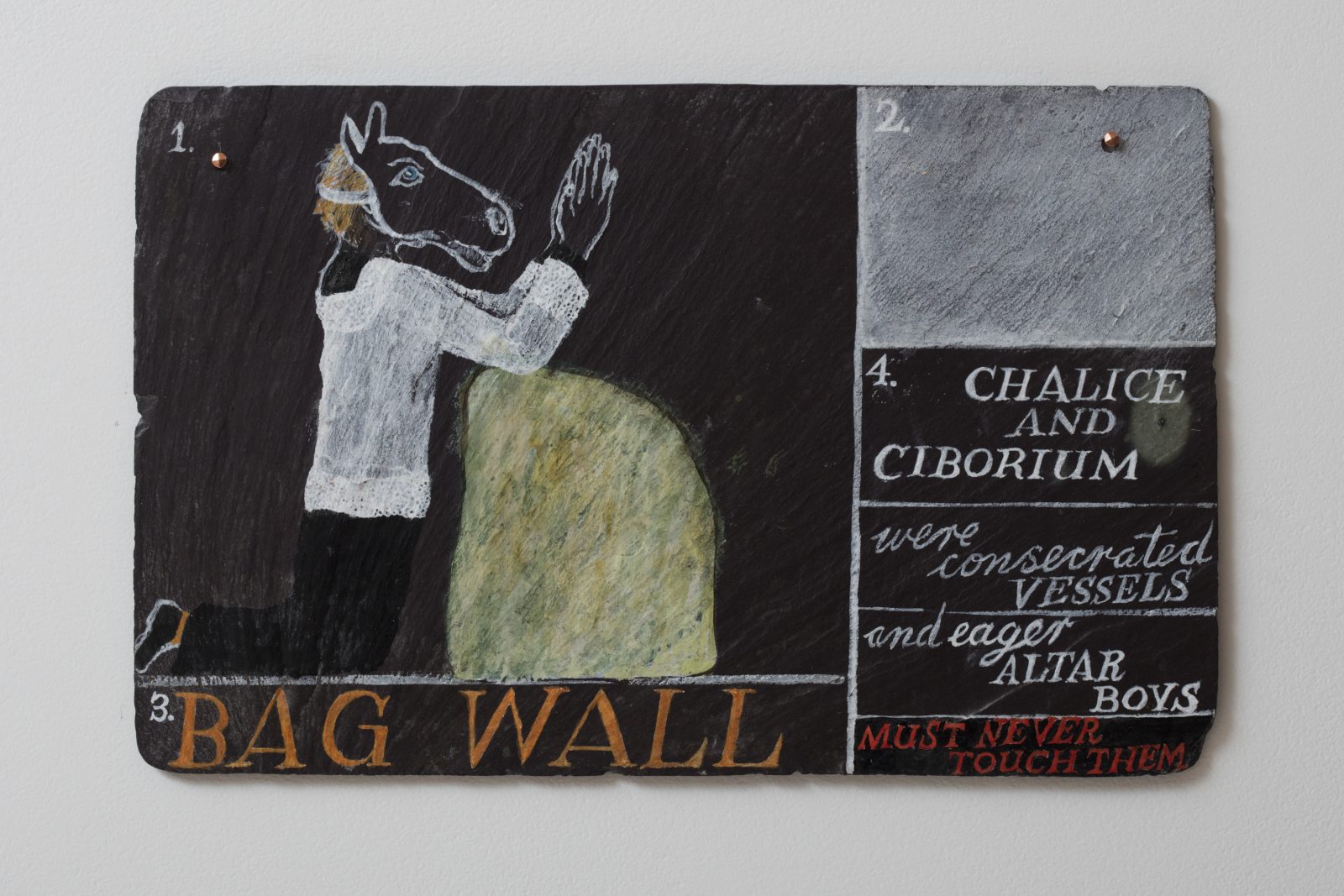
acrylic on Welsh slate
200 x 310 mm